While pressurised sealed vessels like submarines have an obvious parallel in manned spacecraft.- there are also some elements of their technology which are actually shared between vessels flying in orbit and those under the sea. An example of one of these is the periscope. But just as the porthole has disappeared from general use on surface ships, and now finds that space is their last major use (on Soyuz spacecraft and on the International Space Station), so perhaps the periscope is going the same way.

The USS Chicago shows its periscope wake as it travels though the water at speed. In clear water and at periscope depth where shallow seas sometimes forces you to, large submarines are often easily seen. Courtesy: Wikipedia
Periscopes have been integral to the design of submarines ever since before the First World War. However, now the famous periscope manufacturing companies of the past (albeit in their more modern guises), the UK’s Barr and Stroud (now called Thales Optronics and which is celebrating its 100th year of periscope supply), the USA’s Kollmorgen (now called L3 KEO) and Germany’s Zeiss periscope division (now called Airbus DS Optronics), are conspiring to bring forward the periscope’s retirement. For conventional periscopes are being replaced on the most modern submarines with new optronic (photonic) masts. While using retractable masts for other services, such as carrying a satellite communications antenna, have been used by submarines for many years, this the first time that submarines have had no periscopes aboard. For example, the new Royal Navy Astute class subs carry two Thales CM10 optronic masts and no optical periscopes.
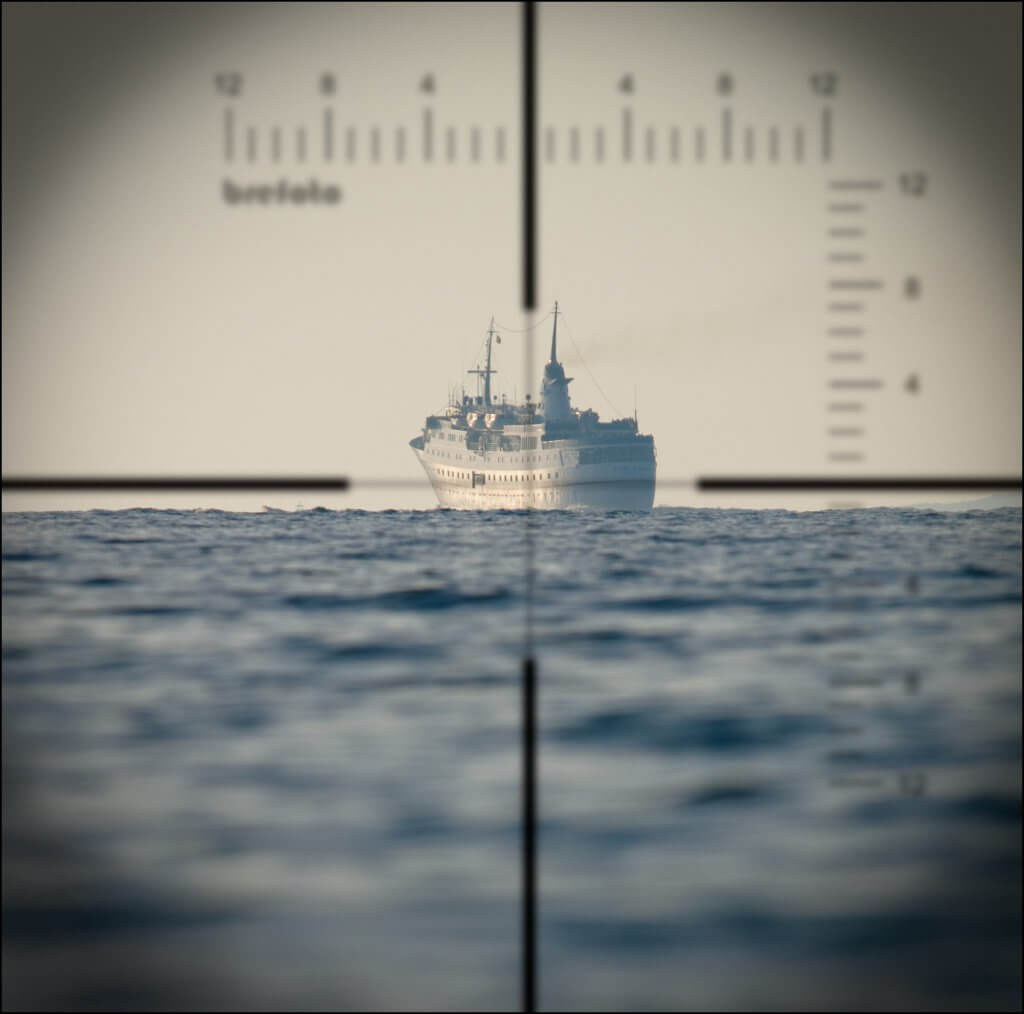
Submarine periscope view of ocean liner. Courtesy: dtw.co.uk
These are still retractable telescopic masts for viewing from above the submarine, but they are longer have a wide optical tube puncturing the pressure hull. Instead, just a small wire or optical fibre is needed to carry the images from provided electrical optical television, thermal and radar sensors at the end of the optronic mast. Thus, instead of a sub captain looking through a periscope’s eyepieces for a suitable target, nowadays he or she is more likely to be looking at images on a screen.
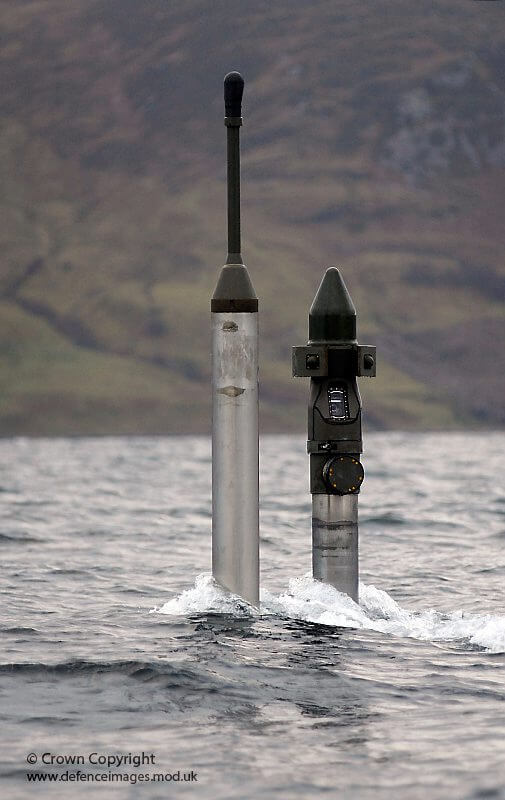
The periscopes of Royal Navy submarine HMS Talent poke above the cold waters of the Kyle of Lochalsh, Scotland during surfacing drills in the in December 2009. Courtesy: UK MoD/Crown Copyright
Of course, super high tech hardware is not always the best. Lockheed Martin has had to replace its very costly hand controllers for its submarine optronic masts with those from a computer game – namely the Xbox 360 hand controller as the sailors found that it was better!
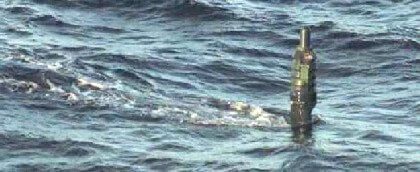
A Virginia-class submarine’s Optronic/Photonic mast above the surface. Courtesy: US Navy via Wikipedia
However, before we say goodbye to conventional periscopes – simple periscopes still being used on armoured vehicles – and by manned spacecraft in space. While there was a famous one flown on the very much retired Apollo lunar lander, current human carrying Soyuz spacecraft still has one to aid observation. The Soyuz spacecraft design, with its orbital module blocking the front of the manned capsule, originally made a periscope necessary for a view of the docking target, should a manual docking ever be needed. Yes – television cameras have largely superseded this periscope – but Soyuz spacecraft – and their still carry one as a back up – even calling it the Soyuz Backup Periscope (ВСК-4). By the way, apart from forward views, the top prism can been flipped to provide a straight up view – usually of the Earth. Surprisingly, China’s Soyuz-inspired Shenzhou design does not carry a periscope, relying on TV cameras instead.
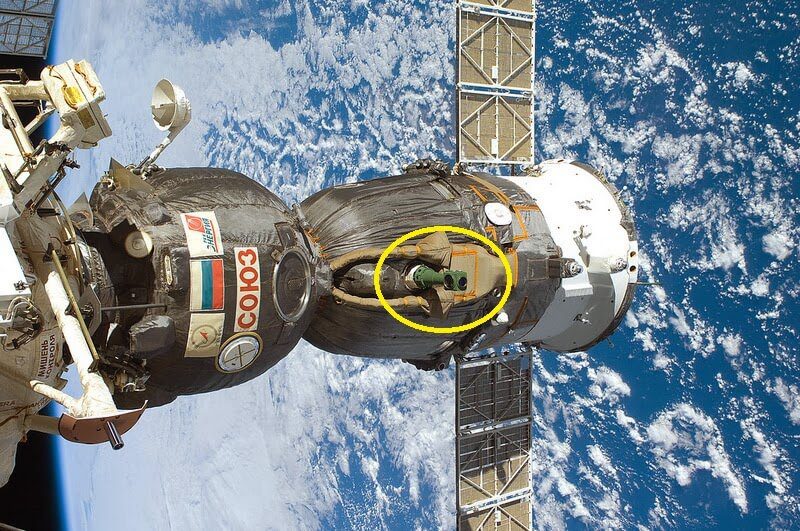
The Soyuz back up periscope is circled. Courtesy: NASA
That is not to say that these space periscopes will be needed in the future. Both Russia and China plan new generation manned spacecraft with the manned capsule “Apollo style” at the front just like Orion – and with a window view removing the need for a periscope to look past obstructions.
A final note for those that want to try the “old school” optical periscopes from submarines and U-boats past. Many submarine museums have working submarine telescopes to look through.
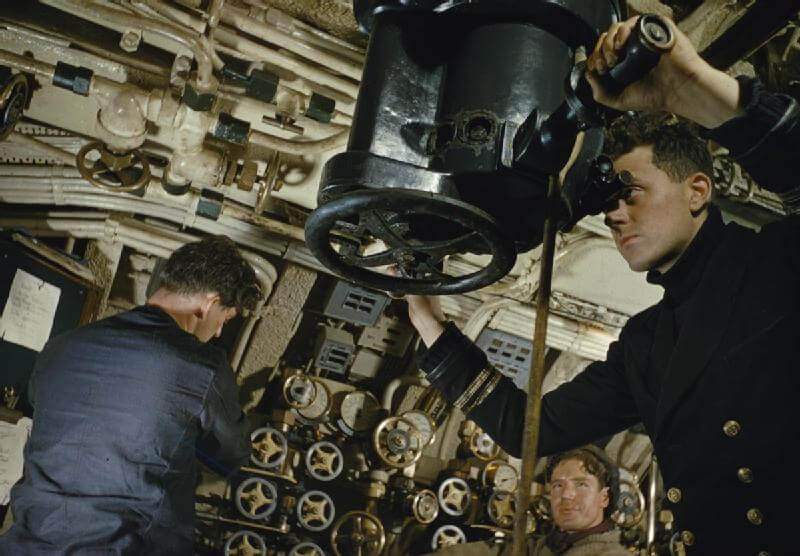
Royal Navy Lieutenant looks through HMS Tribune’s surveillance periscope in this publicity still. Courtesy: IWM via nave-net.co.uk
The UK Submarine Museum in Gosport has a Barr and Stroud-built CK24 binocular search and CH74 monocular attack periscopes on its HMS Alliance submarine which you can still, look through. Even better, it has a working pair of later mark periscopes to look through in its main building. Those ones have a deadly past. These were taken from the former nuclear sub HMS Conqueror, and its submarine commander looked through them to aim Conqueror’s Mark VIII torpedoes which sunk Argentine Navy’s cruiser Belgrano in 1982.
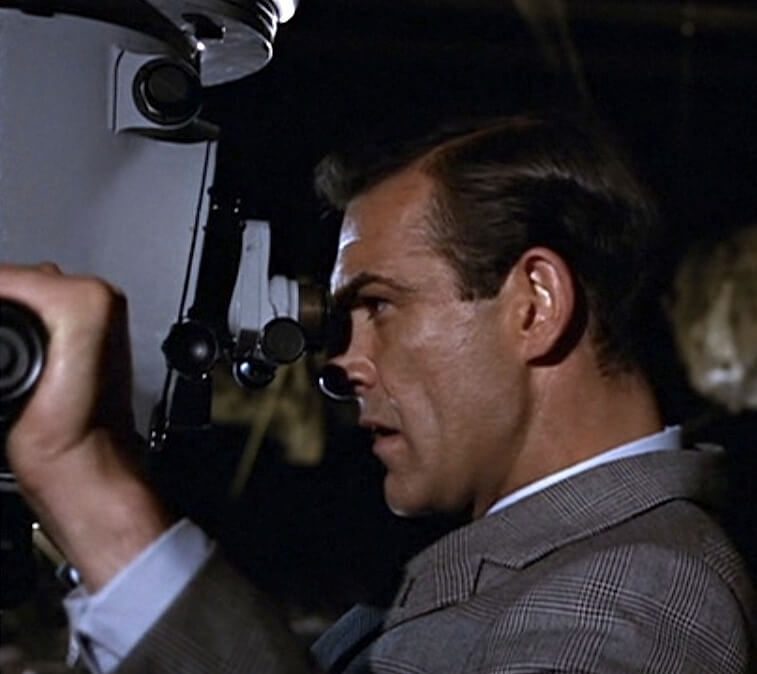
Sean Connery as British secret agent 007 James Bond checks out the opposition using an ex-Royal Navy periscope in From Russia With Love (1963). Courtesy: Eon Productions
Of course, you can always set up a naval periscope elsewhere on land – or in Istanbul’s sewers for instance. In film fiction, James Bond looked though an ex-Royal Navy submarine periscope set up in this way in From Russia with Love (1963). It had helpfully been positioned underneath the Russian (Soviet) Embassy in Istanbul to look through a mouse hole at the occupants inside.
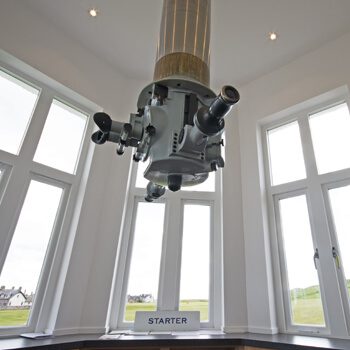
Having a periscope in your house or hut can only be good thing to have. Courtesy: The Golf House Club Elie
Meanwhile, in actual reality, a golf course at Elie in Scotland has set up an ex-Royal Navy surveillance periscope from the former 1950s submarine HMS Excalibur in the starter’s hut. It is used to see first green and to time the next tee off, and presumably could be used to stop anyone using depth charges to shift their ball into the first hole. 🙂

The ex-Royal Navy submarine periscope sticks out of the Starter’s Hut at the Golf House Club, Elie, Courtesy: Golf House Club, Elie







